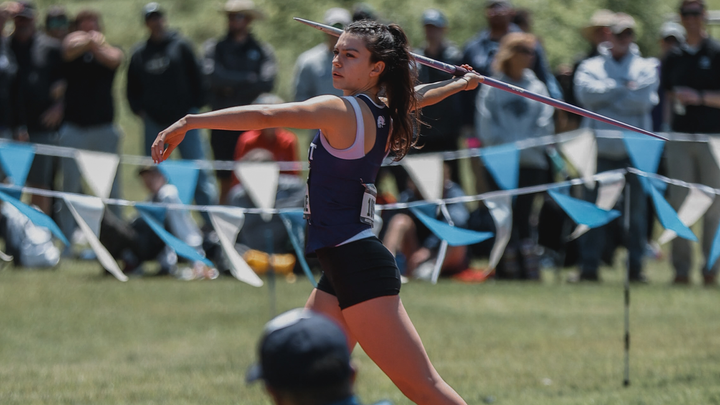Anti-Ableist Amherst: Disabled Students Deserve a Resource Center
In the debut of their column “Anti-Ableist Amherst,” Assistant Opinion Editor Willow Delp ’26 advocates for a disabled/neurodivergent resource center on campus.
When I’m not in classes or my dorm, I can usually be found in one of the resource centers in Keefe Campus Center — most frequently, the Multicultural Resource Center or the Queer Resource Center.
I love the resource centers. There is so much to do within each center: I eat, relax, work, and nap; I spend many of my waking (and non-waking) hours on the centers’ soft couches. The resource centers are wonderful spaces that foster collaboration and community, and I believe the campus is significantly better off with their presence. They lessen the burden of holding a marginalized identity on campus, and I feel truly comfortable — both emotionally and physically — within their four walls.
However, for all the benefits they provide, and for the variety of resource centers available, there is a disconcerting absence of resources for a notable marginalized community on campus: the disabled and neurodivergent community. This is unsurprising, considering the fact that disability and neurodivergence is rarely considered a site of marginalization in discussions about privilege. Neurotypical, able-bodied people are infrequently asked to reflect upon the societal advantages that they possess. Implicit in the classroom are assumptions that everyone communicates, processes information, and moves the same.
The absence of these conversations has created a social chasm that often goes unnoticed by the able-bodied and neurotypical majority. For students with disabilities, whether visible or invisible, campus events intended to cultivate a sense of community are often unintentionally exclusionary. For instance, in August Bates’ ’23 education studies thesis, “Accessibility in the Elite Liberal Arts: Experiences and Perspectives of Students with Disabilities at Amherst College and Recommendations for Institutional Change,” they describe the experience of a student struggling to connect with campus programming due to the “loud and overwhelming” nature of many events. The interviewee explained that “‘trying to be on campus and trying to make friends while also knowing that a lot of the events are just going to be miserable for me has been difficult’”
I can corroborate this from my personal experience — when I was a first-year still trying to carve out my niche, the noise level of many campus events ostensibly for “everyone” often left me unable to enjoy much of Amherst’s social life. A disabled/neurodivergent student center would mitigate the failures of general campus events to accommodate disabled and neurodivergent students by specifically tailoring programming for said students.
When I asked members of the Disabled and Neurodivergent Alliance about whether they would like a disabled resource center, students were interested in the idea. “[B]eing disabled/neurodivergent can be deeply isolating,” Naima Mohamed ’27 said, “and having a gathering space for disabled students along with the focused care that a resource center can provide would lessen that isolation.”
Similarly, Connor Farquhar ’26 argued that, instead of “pretending that there is no population of ND [neurodivergent] kids at Amherst,” the college should “acknowledge the likelihood/percentage of ND kids and offer appropriate support and effective places for ND students.” Farquhar also voiced support for a mentoring program for neurodivergent students and designated quiet corners at loud events.
Just the existence of this resource center could lead to increased social participation for disabled students by allowing them to meet one another and foster a sense of community. The center could also provide physical support — Mohamed, for instance, said that it would be helpful to have a place to get earplugs and kinesiology tape.
In their thesis, Bates explicitly argues for the implementation of a resource center for disabled students, writing: “[O]ne way that Amherst College could increase the visibility of disability on campus is to build disability into the framework of the resource centers.”
Moreover, in a paper entitled “Building Neurodiversity-Inclusive Postsecondary Campuses: Recommendations for Leaders in Higher Education,” the authors recommend creating disability cultural centers on college campuses, suggesting that these cultural centers can resemble existing spaces for similarly marginalized students. The authors note that a disability cultural center can “provide social connection, belonging, and mutual support for their members” as well as “promote positive disability identities, culture, and community.”
Ultimately, a resource center is no panacea for the ableism and erasure that persists on Amherst’s campus. However, a physical space devoted to disabled and neurodivergent life is a visible commitment to disabled and neurodivergent people. It demonstrates that those outside the limits of neurotypicality and able-bodiedness are minority groups who experience tangible marginalization (in the same way that people of color and queer people experience marginalization) and therefore deserve protection, safety, and allocated resources. Such awareness and resource allocation would improve the state of disabled and neurodivergent life on campus.
This is the first edition of my new column, “Anti-Ableist Amherst.” I hope that this column can be a space where often-marginalized voices within the Amherst community are foregrounded and uplifted, and disabled/neurodivergent people are no longer pushed to the sidelines. As I have written previously, accessibility is a major issue at Amherst College — but the physical inaccessibility of the terrain only comprises one part of the story. I intend to draw on personal experiences, others’ experiences, Amherst College history, and core tenets of disability justice. What I hope to emphasize most is the simple fact that we are here, and we are not going anywhere.





Comments ()